At first blush, one might be tempted to dismiss the Hyundai CRATER Concept debuting at this year’s Los Angeles Auto Show as little more than a fantasy. That would be a mistake, GearJunkie has learned.
While there are some obvious show car novelties, like the flashlights built into CRATER’s sideview mirrors, senior Hyundai officials confided they are looking to dramatically extend the brand’s off-road capabilities.
At an otherwise somnambulant 2025 Los Angeles Auto Show, Hyundai delivered plenty of much-needed excitement on Thursday, notably with the debut of the CRATER Concept. It has all the trappings of a classic show car, an over-the-top design with some wild and wide-eyed features, like the bottle opener built into one of its recovery hooks.
But a closer inspection should give encouragement to those hoping CRATER will live on past this year’s auto show season. One hint is the XRT badge embossed into the right corner of CRATER’s tailgate. That’s the designation Hyundai has been using for more rugged versions of its current model lineup, such as the Ioniq 5 XRT, Santa Cruz XRT, and Santa Fe XRT.
Hyundai Gets Adventurous
“We’re very serious” about going well beyond the capabilities of even the XRT Pro trim introduced with the 2026 Palisade SUV, Randy Parker, president and CEO of Hyundai North America, told GearJunkie in an exclusive interview. “The plan is to definitely enhance our off-road capabilities and be more adventurous … over the next couple years,” Parker explained.
“This is not just a concept car,” added SangYup Lee, executive vice president and head of global design at Hyundai Motor Co. “It could very easily be turned into a production car.”
Rugged New Design
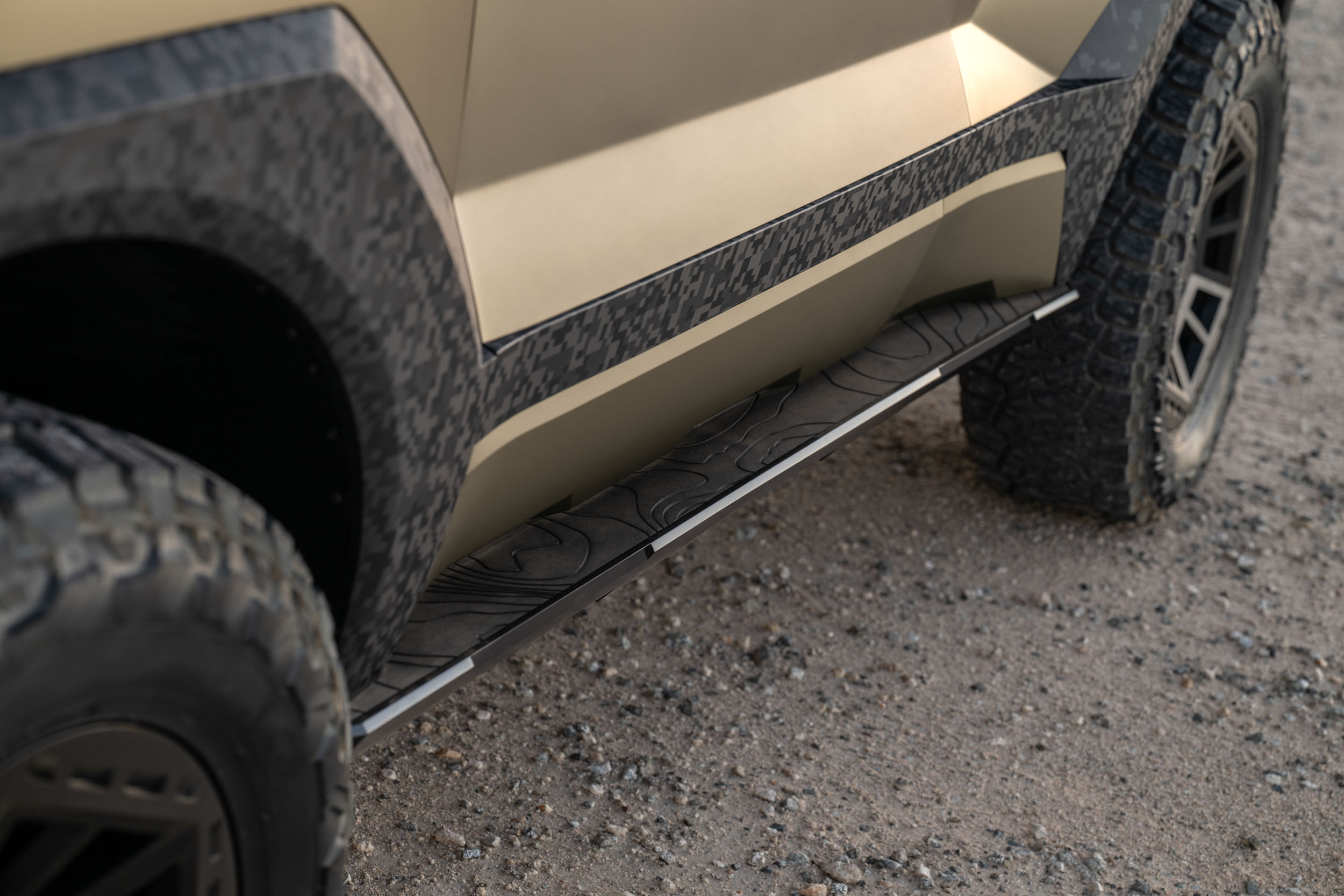
Hyundai describes the CRATER Concept’s exterior design language as “The Art of Steel.” That fits the rugged look of the prototype, starting with the extensive underbody cladding designed to protect CRATER from the roughest obstacles it might face out on the trail. That extends to critical portions of the body and rocker panels, said Lee, which is painted in a green-gold matte paint “drawing inspiration” from the California coast.
He noted that his design team has been working with the steelmaking arm of the Hyundai conglomerate to come up with alloys that are both rugged and able to be formed into appealing shapes.
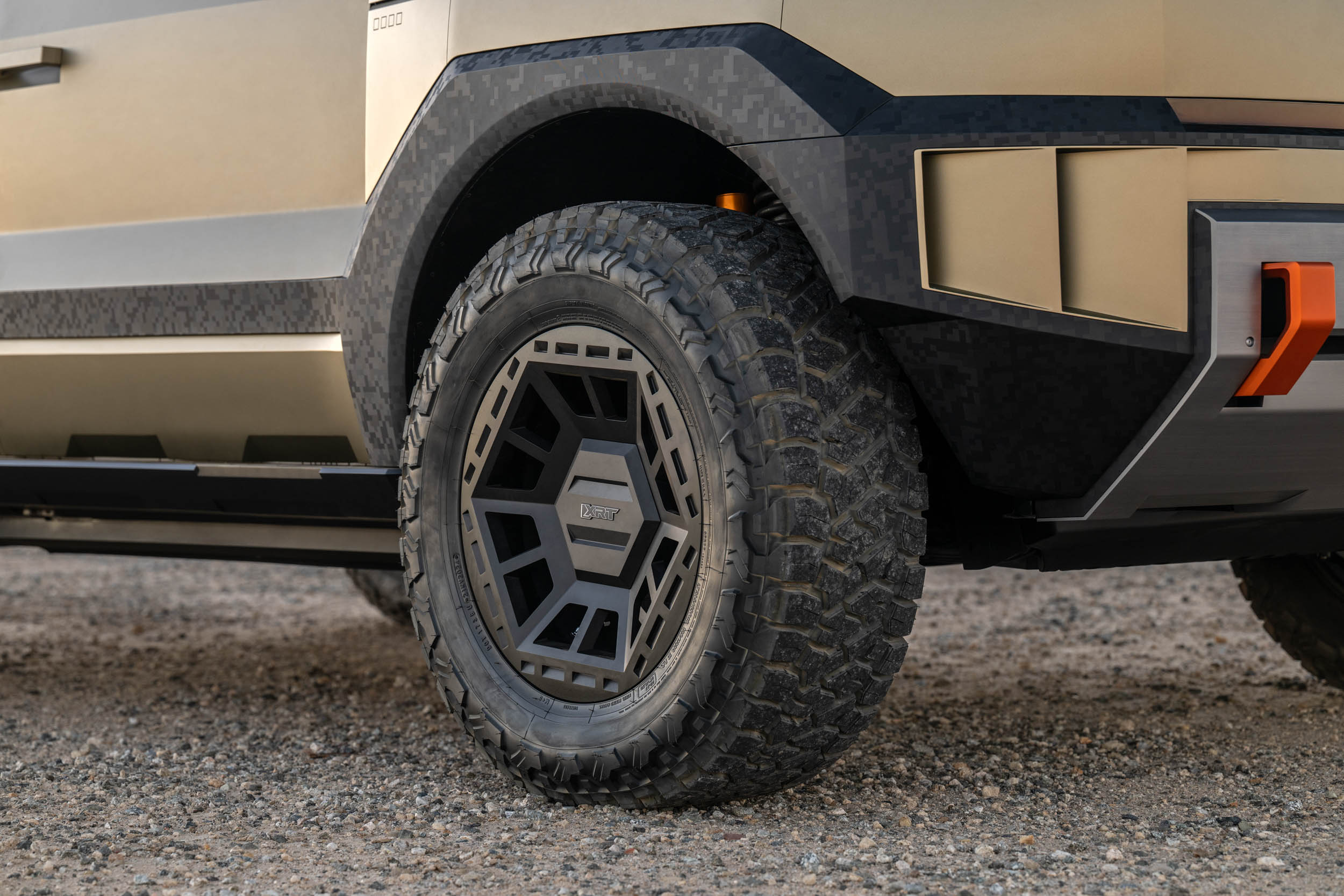
Roughly the size of today’s compact Tucson, CRATER has an imposing presence, enhanced by its sharp creases and 18-inch wheels — meant to look like the crater left after an asteroid impact, the company explained. They’re shod in 33-inch all-terrain tires.
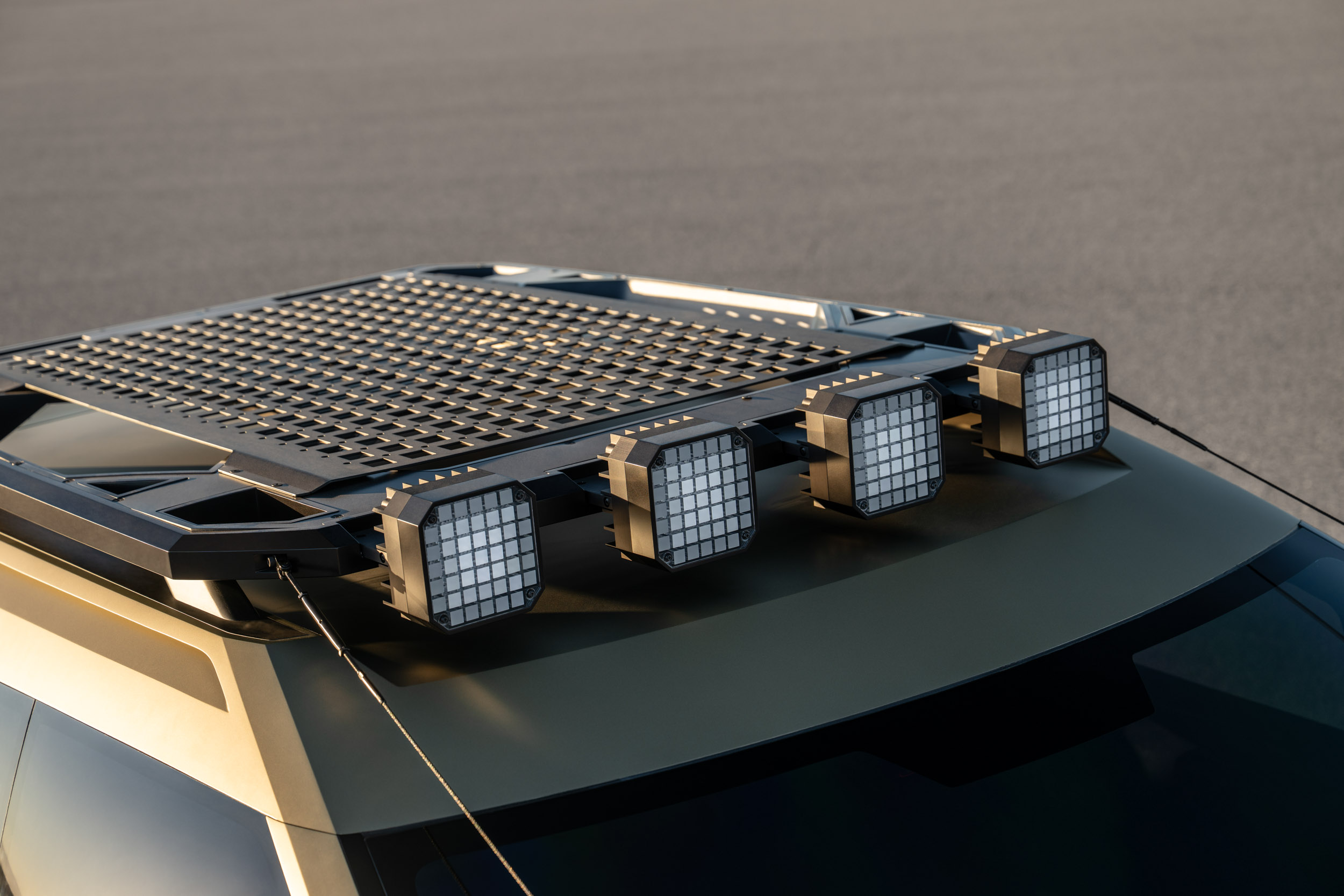
A distinctively styled roof rack was designed as a mounting point for auxiliary lights, additional storage, and other accessories.
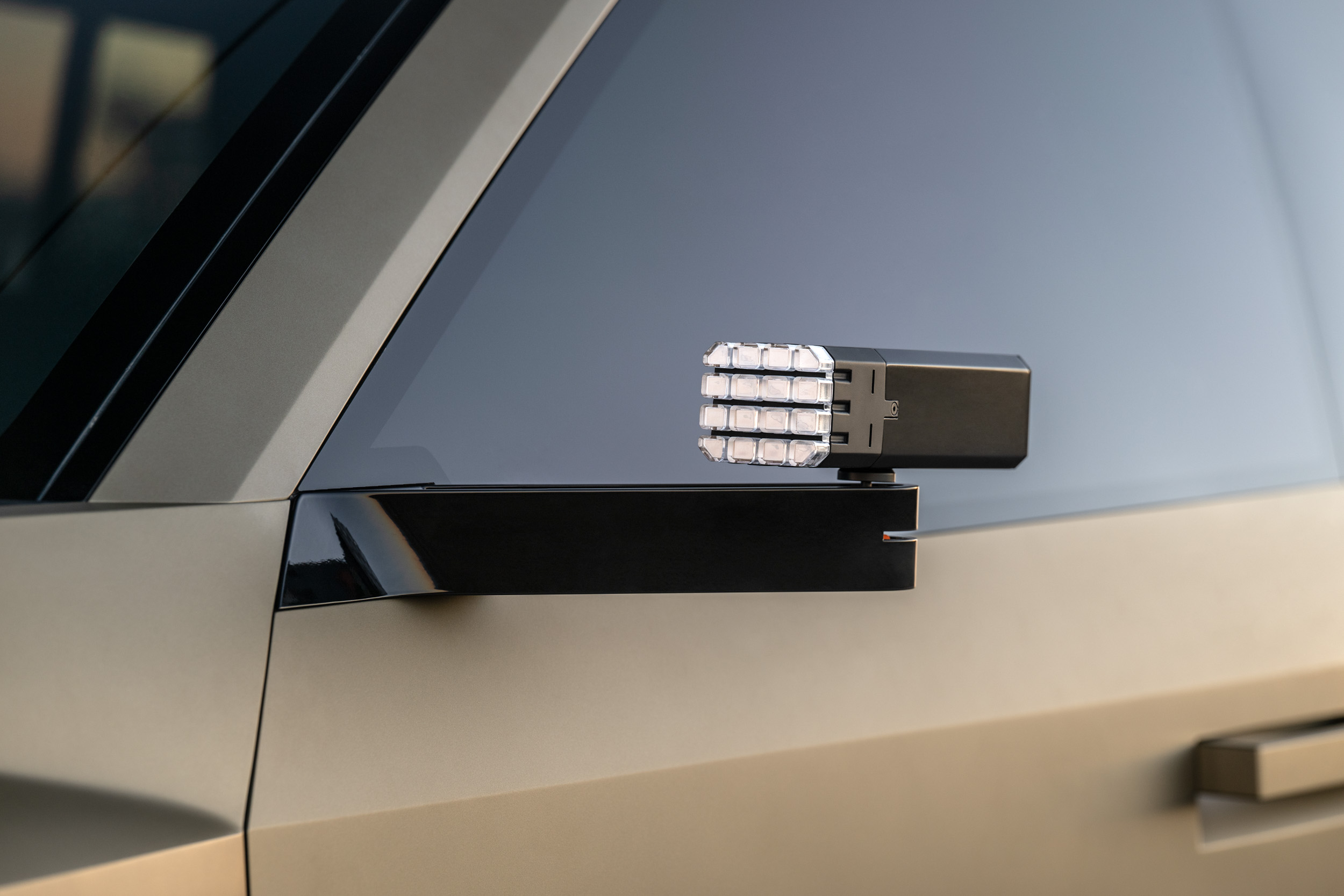
Among the more unusual features: a pair of “limb risers,” cables stretching from hood to roof, Hyundai noted, to provide “added protection from low-hanging branches on narrow and overgrown trails.” Then there are those flashlights built into the sideview mirrors. They can be removed, as can the built-in cameras to record “breathtaking views or even record exciting adventures,” Hyundai noted in a news release.
CRATER Interior Design

CRATER’s cabin is a hybrid design emphasizing both ruggedness and technology. The squared-off steering wheel has dedicated buttons that allow a motorist to immediately select from Snow, Sand, Mud, Auto, and XRT drive modes, each adjusting a variety of vehicle functions, including drivetrain, braking, and shifts.
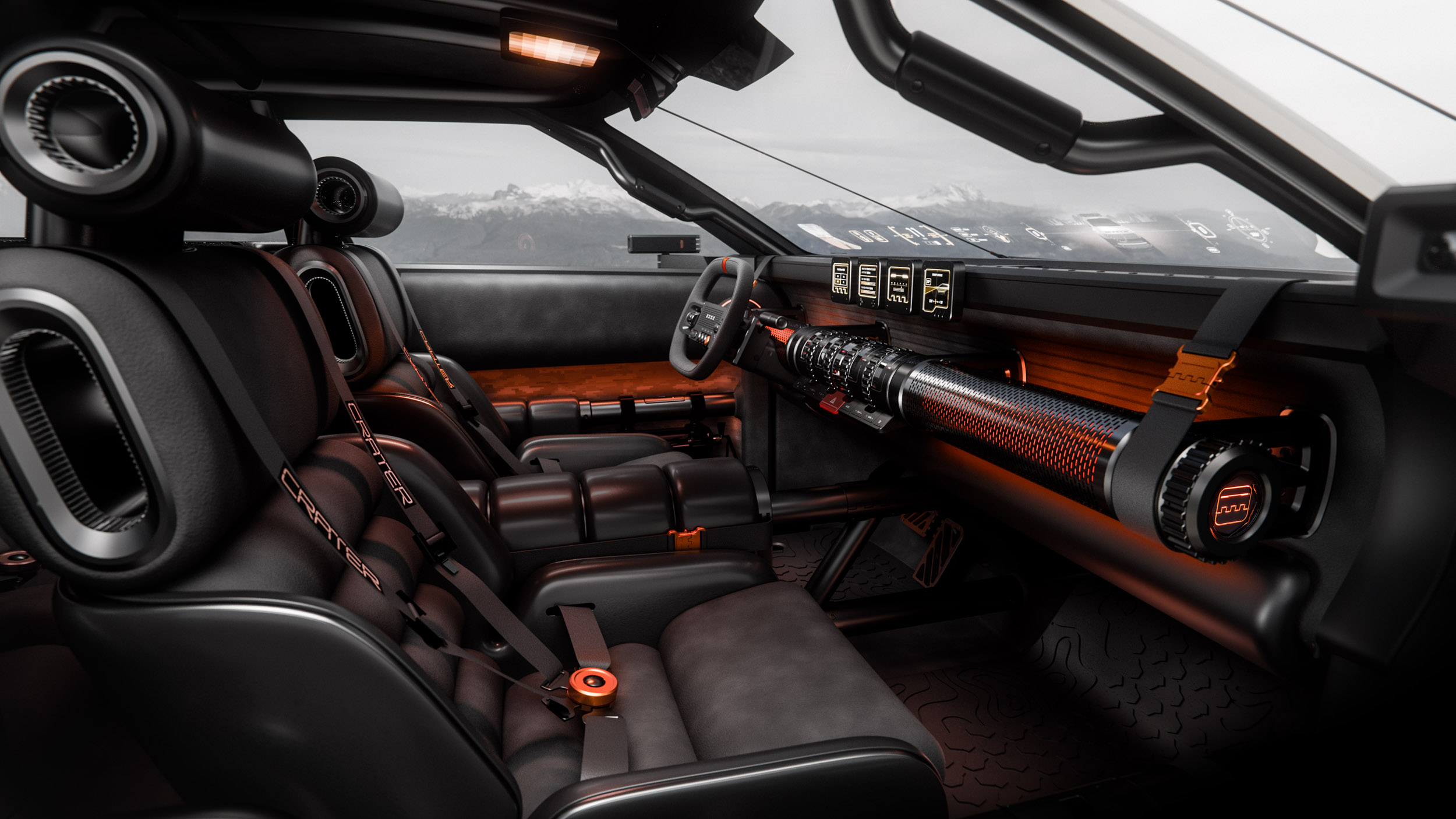
The instrument panel itself is finished in a perforated material designed to let soft ambient lighting pass through. Above the IP, a full-width head-up display could serve up a variety of simultaneous projections, including vehicle data, augmented-reality navigation, and more. The philosophy behind CRATER’s technology is BYOD. “Bring Your Own Device,” the automaker said, allowing a motorist to create “a flexible and customizable digital experience that adapts to various situations and individual user preferences.”

What Hyundai Isn’t Talking About — Yet
For all the details Hyundai offered up during the CRATER concept’s L.A. debut, the automaker was decidedly mum on one key point: what we would find were we able to lift open the hood. The good news for Hyundai is that it has a variety of options in its toolbox, from internal combustion engines to all-electric, with a variety of different hybrid alternatives, as well.
It’s also working up range-extender technology where the wheels are driven solely by electric motors — but an ICE system serves as a generator, providing a continuing flow of current once the battery pack is drained.
We do know that CRATER has some useful off-road systems, including not only those selectable driver modes but downhill brake control — a sort of low-speed cruise control — and trailer brake control. It also has a built-in compass and altimeter, and both a fire extinguisher and a first-aid kit.
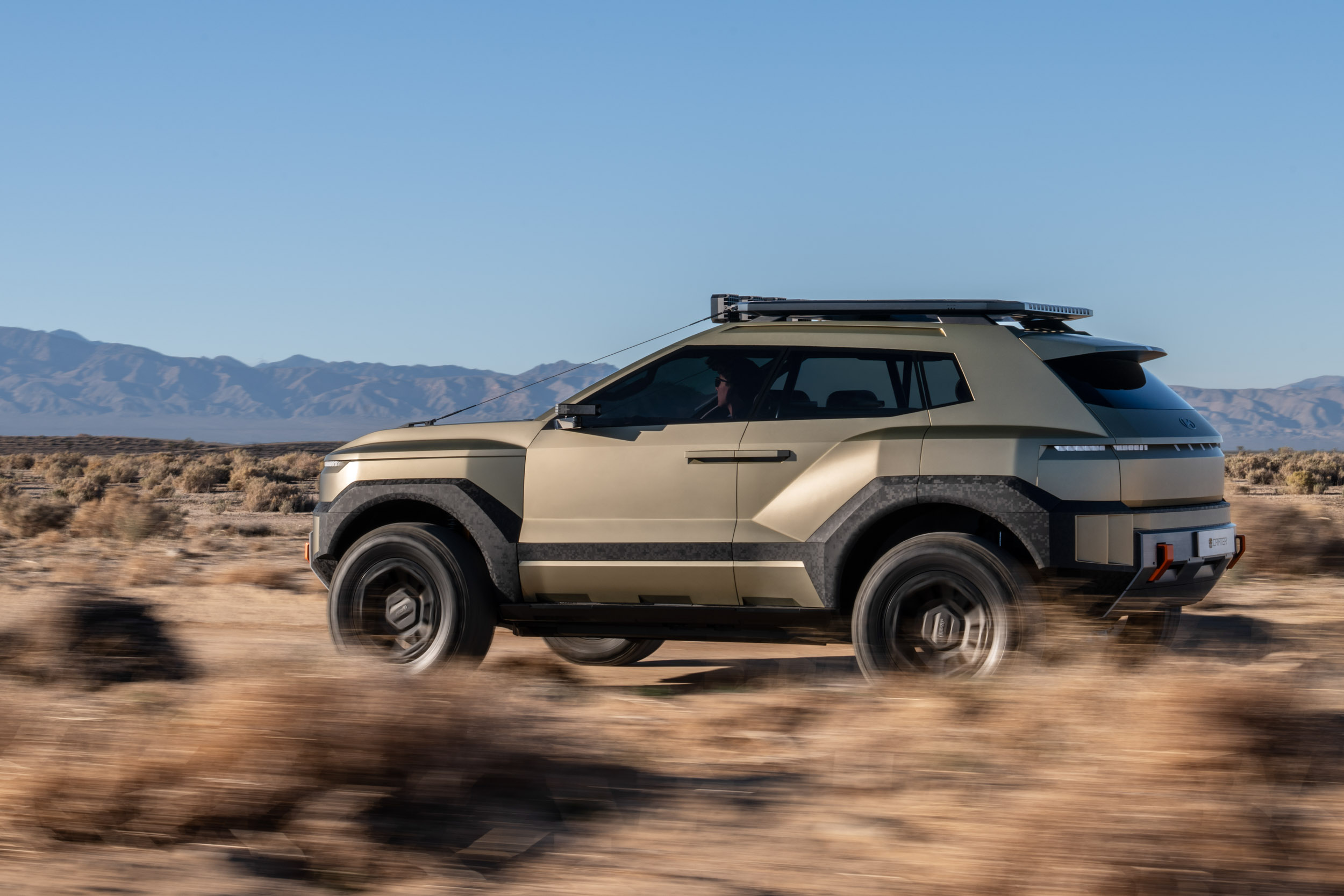
Playing in the Sand Box
Asked whether the comments made by Parker and Lee should be dismissed as hyperbole, a well-placed Hyundai insider, asking for anonymity, noted what’s happened to the old Genesis design studio at Hyundai’s California product development center.
It’s been transformed into something of an off-roader’s fantasyland dubbed “The Sand Box,” and is meant to encourage development of ever more rugged products that would wear the XRT and XRT Pro badges in the coming years.
Since Hyundai first released a few CRATER Concept renderings earlier this week, there’s been speculation on how far it might go. Would it, for example, dare to challenge off-road icons like the Jeep Wrangler and Ford Bronco? Design chief Lee wouldn’t rule that possibility out, though CRATER, as the concept stands, doesn’t offer at least one key feature Wrangler and Bronco buyers would seemingly expect: removable doors and glass.

That wouldn’t be out of the realm for a production design, said Lee, though he also stressed that, in production, Hyundai might target “many different types of outdoor activities.”
Neither of the executives would provide hard timing for a production vehicle on par with the Hyundai CRATER Concept — but they made it clear that the automaker is taking the concept quite seriously and won’t shunt it aside once this auto show season wraps up.
Read the full article here





